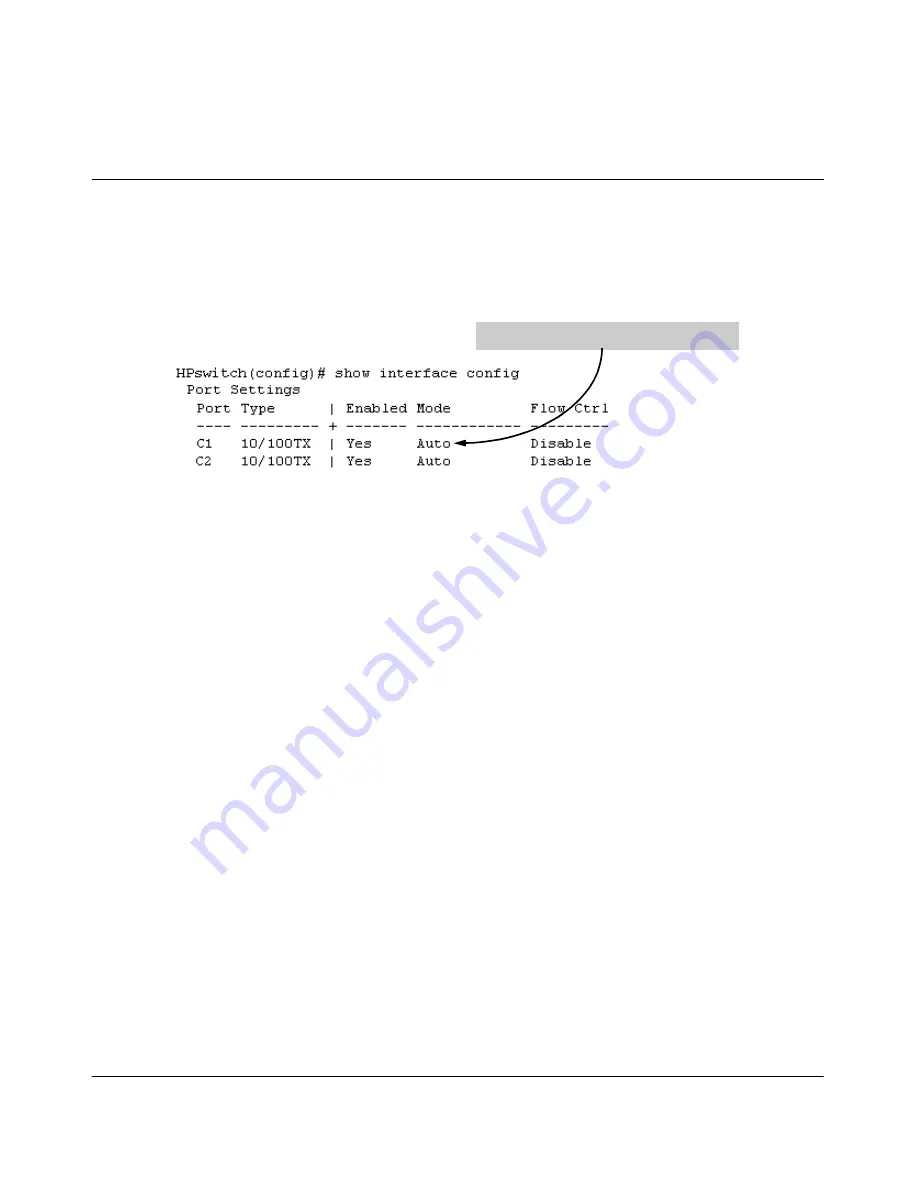
9-14
Optimizing Traffic Flow with Port Controls, Port Trunking, and Port-Based Priority
Port Trunking
Table 9-4.
General Operating Rules for Port Trunks
Media:
All ports on both ends of a trunk group must have the same media type and mode (speed and duplex). The switch
blocks any trunked links that do not conform to this rule. (For the Series 4100GL switches, HP recommends leaving the
port Mode setting at
Auto
or, in networks using Cat 3 cabling,
Auto-10
.)
Port Configuration:
The default port configuration on the Series 4100GL switches is Auto, which enables a port to sense
speed and negotiate duplex with an Auto-enabled port on another device. HP recommends that you use the Auto setting
for all ports you plan to use for trunking. Otherwise, you must manually ensure that the mode setting for each port in a
trunk is compatible with the other ports in the trunk.
All of the following operate on a per-port basis, regardless of trunk membership:
• Enable/Disable
• Flow control (Flow Ctrl)
LACP is a full-duplex protocol. See “Trunk Group Operation Using LACP” on page 9-25.
Trunk Configuration:
All ports in the same trunk group must be the same trunk type (LACP, Trunk, or FEC). All LACP ports
in the same trunk group must be either all static LACP or all dynamic LACP.
A trunk appears as a single port labeled
Dyn1
(for an LACP dynamic trunk)
or
Trk1
(for a static trunk of any type:
LACP, Trunk, or FEC) on various menu and CLI screens. For a listing of which screens show which trunk types, see “How
the Switch Lists Trunk Data” on page 9-31.
For STP or VLAN operation, configuration for all ports in a trunk is done at the trunk level. (You cannot separately configure
individual ports within a trunk for STP or VLAN operation.)
Traffic Distribution:
All of the switch trunk protocols use the SA/DA (Source Address/Destination Address) method of
distributing traffic across the trunked links. See “Outbound Traffic Distribution Across Trunked Links” on page 9-31.
Recommended Port Mode Setting for LACP
Summary of Contents for ProCurve 4104GL
Page 2: ......
Page 26: ...xxiv Getting Started Need Only a Quick Start ...
Page 34: ...1 8 Selecting a Management Interface Advantages of Using HP TopTools for Hubs Switches ...
Page 50: ...2 16 Using the Menu Interface Where To Go From Here ...
Page 172: ...8 24 Time Protocols SNTP Messages in the Event Log ...
Page 240: ...10 30 Configuring for Network Management Applications CDP ...
Page 288: ...11 48 Port Based Virtual LANs VLANs and GVRP GVRP ...
Page 480: ...C 38 Troubleshooting Restoring a Flash Image ...
Page 486: ...D 6 MAC Address Management Determining MAC Addresses ...
Page 490: ......
Page 502: ...12 Index ...
Page 503: ......
















































